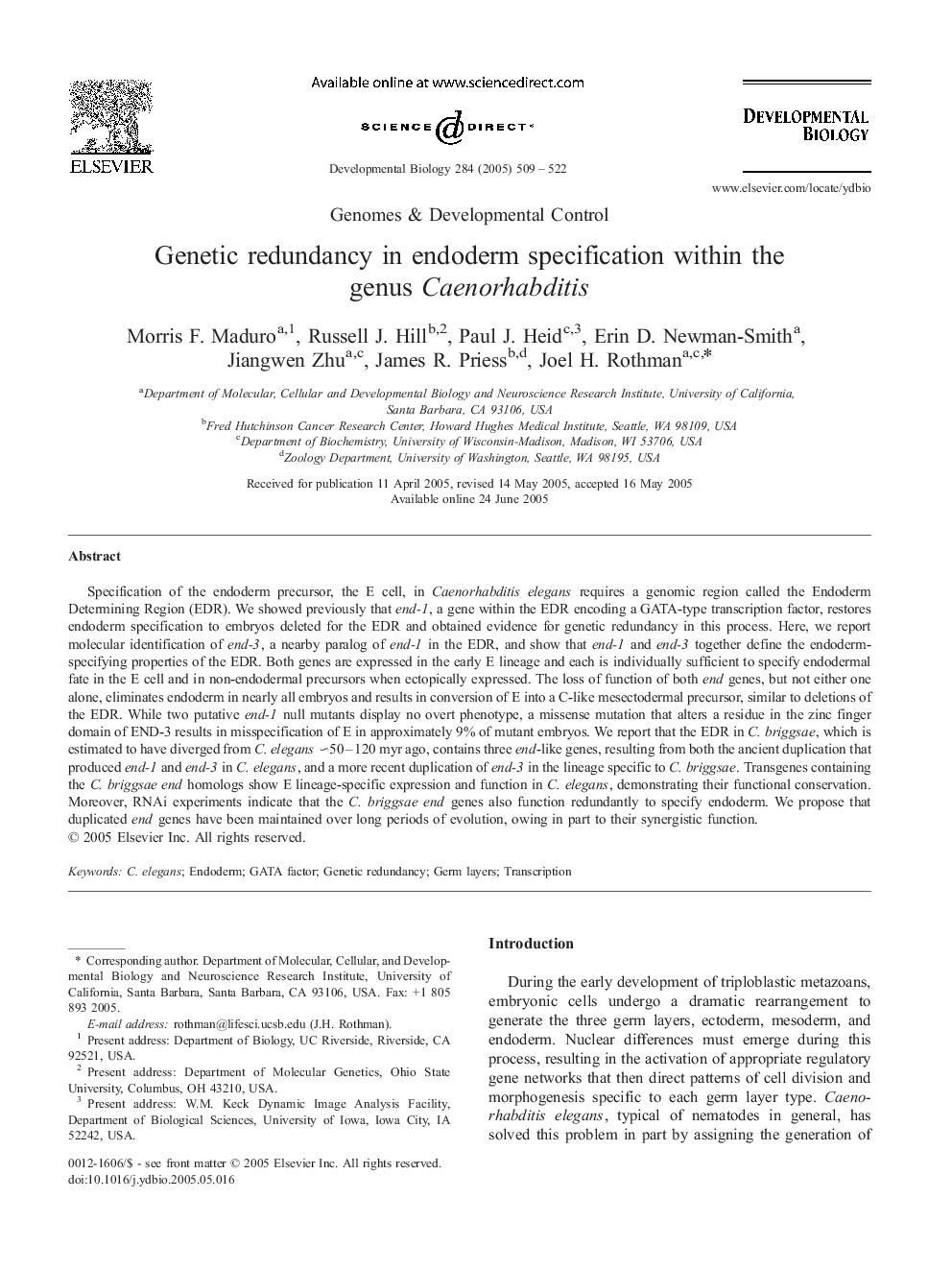| کد مقاله | کد نشریه | سال انتشار | مقاله انگلیسی | نسخه تمام متن |
|---|---|---|---|---|
| 10934184 | 1093883 | 2005 | 14 صفحه PDF | دانلود رایگان |
عنوان انگلیسی مقاله ISI
Genetic redundancy in endoderm specification within the genus Caenorhabditis
دانلود مقاله + سفارش ترجمه
دانلود مقاله ISI انگلیسی
رایگان برای ایرانیان
کلمات کلیدی
موضوعات مرتبط
علوم زیستی و بیوفناوری
بیوشیمی، ژنتیک و زیست شناسی مولکولی
بیولوژی سلول
پیش نمایش صفحه اول مقاله

چکیده انگلیسی
Specification of the endoderm precursor, the E cell, in Caenorhabditis elegans requires a genomic region called the Endoderm Determining Region (EDR). We showed previously that end-1, a gene within the EDR encoding a GATA-type transcription factor, restores endoderm specification to embryos deleted for the EDR and obtained evidence for genetic redundancy in this process. Here, we report molecular identification of end-3, a nearby paralog of end-1 in the EDR, and show that end-1 and end-3 together define the endoderm-specifying properties of the EDR. Both genes are expressed in the early E lineage and each is individually sufficient to specify endodermal fate in the E cell and in non-endodermal precursors when ectopically expressed. The loss of function of both end genes, but not either one alone, eliminates endoderm in nearly all embryos and results in conversion of E into a C-like mesectodermal precursor, similar to deletions of the EDR. While two putative end-1 null mutants display no overt phenotype, a missense mutation that alters a residue in the zinc finger domain of END-3 results in misspecification of E in approximately 9% of mutant embryos. We report that the EDR in C. briggsae, which is estimated to have diverged from C. elegans â½50-120 myr ago, contains three end-like genes, resulting from both the ancient duplication that produced end-1 and end-3 in C. elegans, and a more recent duplication of end-3 in the lineage specific to C. briggsae. Transgenes containing the C. briggsae end homologs show E lineage-specific expression and function in C. elegans, demonstrating their functional conservation. Moreover, RNAi experiments indicate that the C. briggsae end genes also function redundantly to specify endoderm. We propose that duplicated end genes have been maintained over long periods of evolution, owing in part to their synergistic function.
ناشر
Database: Elsevier - ScienceDirect (ساینس دایرکت)
Journal: Developmental Biology - Volume 284, Issue 2, 15 August 2005, Pages 509-522
Journal: Developmental Biology - Volume 284, Issue 2, 15 August 2005, Pages 509-522
نویسندگان
Morris F. Maduro, Russell J. Hill, Paul J. Heid, Erin D. Newman-Smith, Jiangwen Zhu, James R. Priess, Joel H. Rothman,